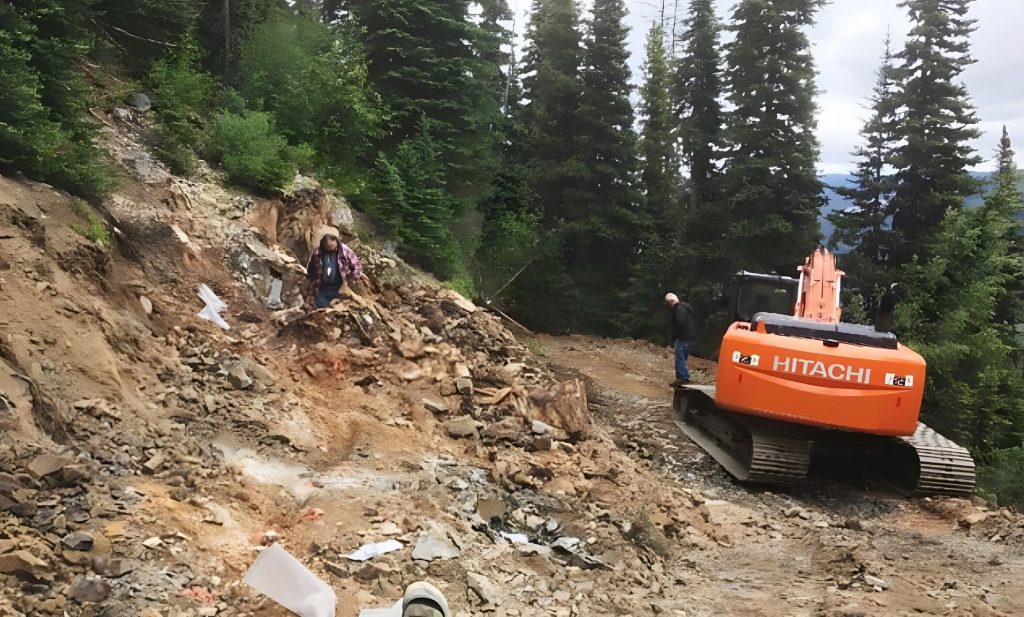New Destiny Mining drills porphyry dikes and copper mineralization at Treasure Mountain, British Columbia

New Destiny Mining Corp. [TSXV-NED] provided a further update on its 2024 exploration program at the Treasure Mountain project, near Princeton, British Columbia.
Drilling continues at the Treasure Mountain property with seven holes completed so far for a total of 1328.5 metres cored. All the holes have been drilled in the Railroad area of copper-silver mineralization.
Hole 7 (TMN24-07) targeted a soil copper anomaly (values to 112 ppm copper) located southeast of the Railroad adits that could possibly be an extension of the Railroad copper-silver mineralized zone. Fracture controlled malachite copper mineralization occurs in a road cut near the collar position of this hole.
The hole was drilled to a depth of 268.5 metres and intersected multiple intervals of altered felsic porphyry amounting to 21.9 metres or 8% of the core. Alteration consists of pervasive pale green sericite and quartz with pyrite. A quartz vein mineralized with chalcopyrite (copper) and tetrahedrite (silver and antimony-bearing mineral) occurs within one of the altered porphyry intervals at 43.7 metres depth. Analysis using a portable XRF indicates the presence of significant copper (0.34%) and antimony (0.16%). Chalcopyrite mineralization was also observed in the host Zoa Intrusive Complex at 79.13 metres. Near the bottom of the hole, a mineralized altered porphyry dike was intersected, containing disseminated and fracture-controlled pyrite and possible fine-grained chalcopyrite.
The results indicate the soil anomaly is underlain and possibly sourced by copper-silver mineralization related to altered felsic porphyry dikes. The association between altered porphyry and mineralization appears to be characteristic of the Railroad copper-silver area.
The Treasure Mountain property covers 10,819 hectares and is located 38 km west of the Copper Mountain mine at Princeton in southern BC. Targets on the property include critical minerals in porphyry copper-moly deposits, and gold-quartz vein and polymetallic silver-rich vein deposits.
Portable XRF (X-Ray Fluorescence) readings are semi-quantitative measurements and are used as guideline to augment the understanding of the mineralization observed. These measurements are not intended to be representative of the geochemical composition of the material measured.
